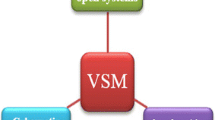Abstract
Managing financial institutions in an underdeveloped economic context has become a real challenge nowadays. In order to reach the organization’s planned goals, they have to deal with structural, behavioral and informational problems. From the systemic point of view, this situation gets even worse when the company does not present organizational boundaries and a cohesive identification for their stakeholders. Thus, European countries have some special financial lines in order to help the development of micro credit in Latin communities in an attempt to help the local economy. However, institutions like Caixa dos Andes in Peru present management problems when dealing with this complexity. Based on this, how can the systemic eye help in the diagnosis of soft problems of a Peruvian financial company? This study aims to diagnose soft problems of a Peruvian financial company based on soft variables like identity, communication and autonomy and also intends to identify possible ways to redesign its basic framework. The (VSM––Viable System Model) method from Beer (1967), applied in this diagnostic study, was used in a practical way as a management tool for organizations’ analysis and planning. By describing the VSM’s five systems, the creation of a systemic vision or a total vision is possible, showing the organization’s complexity from the inside. Some company’s soft problems like double control, inefficient use of physical and human resources, low information flows, slowness, etc. The VSM presented an organizational diagnosis indicating effective solutions that do integrate its five systems.


Similar content being viewed by others
Notes
A deep study of Beer´s model is required, see Beer (1972).
References
Beer S (1967) Cybernetics and management. Wiley, Chichester
Beer S (1972) Brain of the firm. Wiley, Chichester
Coelho V (2004) Abordagem Sistêmica. Archive available in www.geocites/vanio_coelho/sistemica.htm. Accessed 20 Jan 2004
Espejo R, Harnden R (1989) The VSM: an ongoing conversation. In: Espejo R, Harnden R (eds) The viable system model: interpretations and applications of Stafford Beer’s VSM. John Wiley and Sons Ltd
Monobe T (1998, Jan/abr) Enfoque Sistêmico na Administração de Investimentos. Caderno de Estudos FIPECAFI 10(17):58–78
Pinheiro SLG (2000) O enfoque sistêmico e o desenvolvimento rural sustentável: Uma oportunidade de mudança da abordagem hard-systems para experiências com soft-systems. Anal X Congresso Internacional de Sociologia Rural, Rio de Janeiro
Rosnay J (1975) Le macroscope: vers une vision globale. Seuil, Paris
Walker J (1998) The Viable Systems Model: a guide for co-operatives and federations. Available in http://www.scio.org.uk/resources/vsmg_2.2/pdf/vsmg_2_2.pdf. Accessed 7 Dec 2005
Author information
Authors and Affiliations
Corresponding author
Rights and permissions
About this article
Cite this article
Cezarino, L.O., Beltrán, A.C. Diagnosis of Organizational Soft Problems in a Peruvian Financial Institution by Systemic Thinking. Syst Pract Action Res 22, 101–110 (2009). https://doi.org/10.1007/s11213-008-9115-7
Published:
Issue Date:
DOI: https://doi.org/10.1007/s11213-008-9115-7




